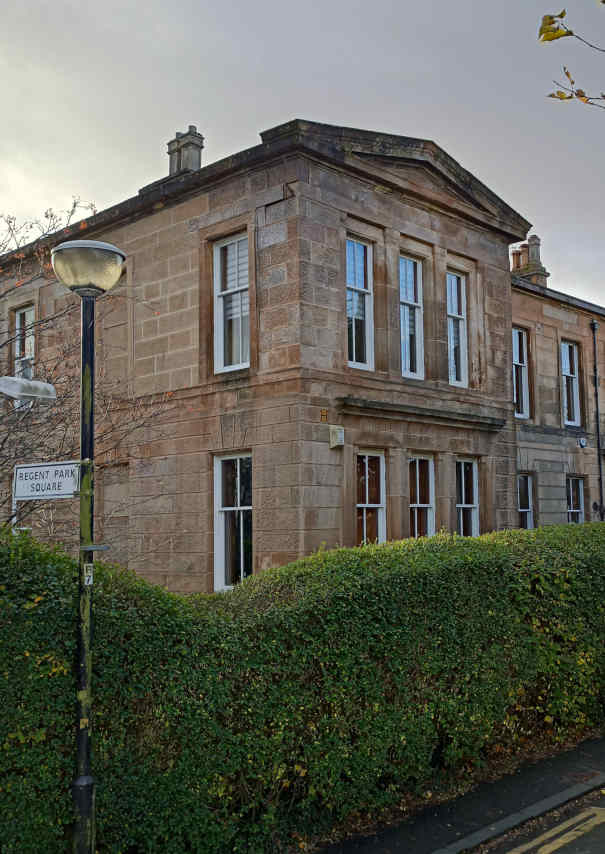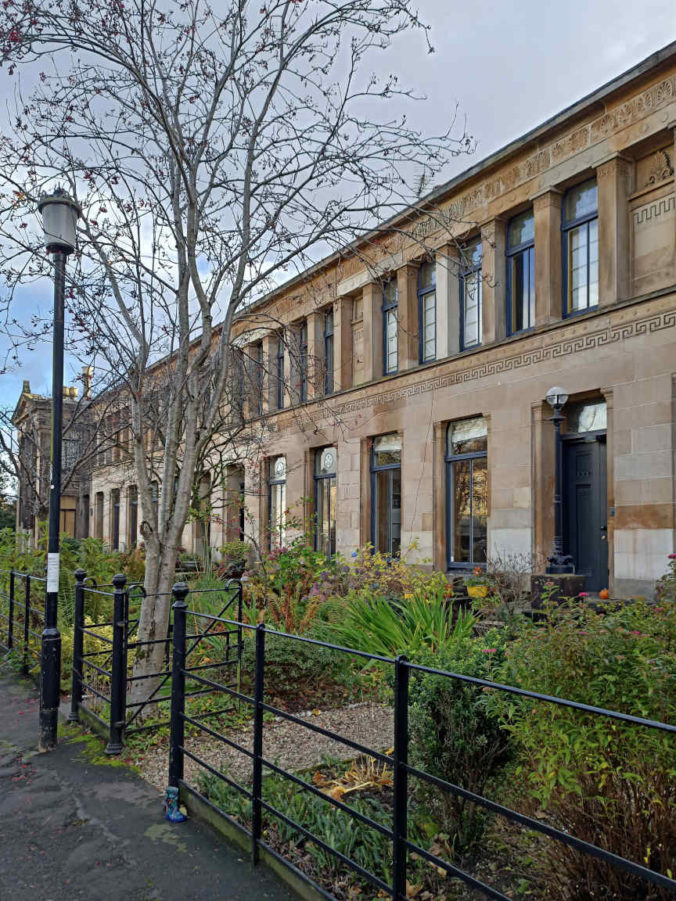The story of 6 Moray Place concerns two Glasgow family firms; first the slippery business of the Fergusons, specialists in soap, oil and lubricants, and second the bunnetry of the Grays, hat and cap manufacturers. The following is research based on the database entry for 6 Moray Place. The Ferguson family is well documented on Ancestry.co.uk by the user GKang, with pictures from user Ian Faris, and the following includes a summary of that work .
John Alexander Ferguson

John Alexander Ferguson. Source: Ian Faris, Ancestry.co.uk
John Alexander Ferguson was born to William Ferguson, a smith and farrier, and Mary White, both of Muirkirk, on 27 February 1819 at Garscube Road in Port Dundas. Mary died in 1825 and William remarried. Of thirteen children, 10 of whom were boys, John was the oldest surviving son.
John married Elizabeth Ferguson, daughter of David Ferguson and Mary Ann Galt of Girvan, in Nicholson Street in September 1846, and they had nine children over the next seventeen years. They lived in the Gorbals and Tradeston in the 1850s. Addresses included Crown Street, and in 1861 at 8 South Apsley Street, but business was good and shortly after they moved to the newly built property in Moray Place, where their final child Alice was born.
Some letters survive; Elizabeth added a note to a letter of her husband’s in 1848, which gives some idea of how difficult life could be in the Gorbals, even for the better off.
Continue reading



Recent Comments